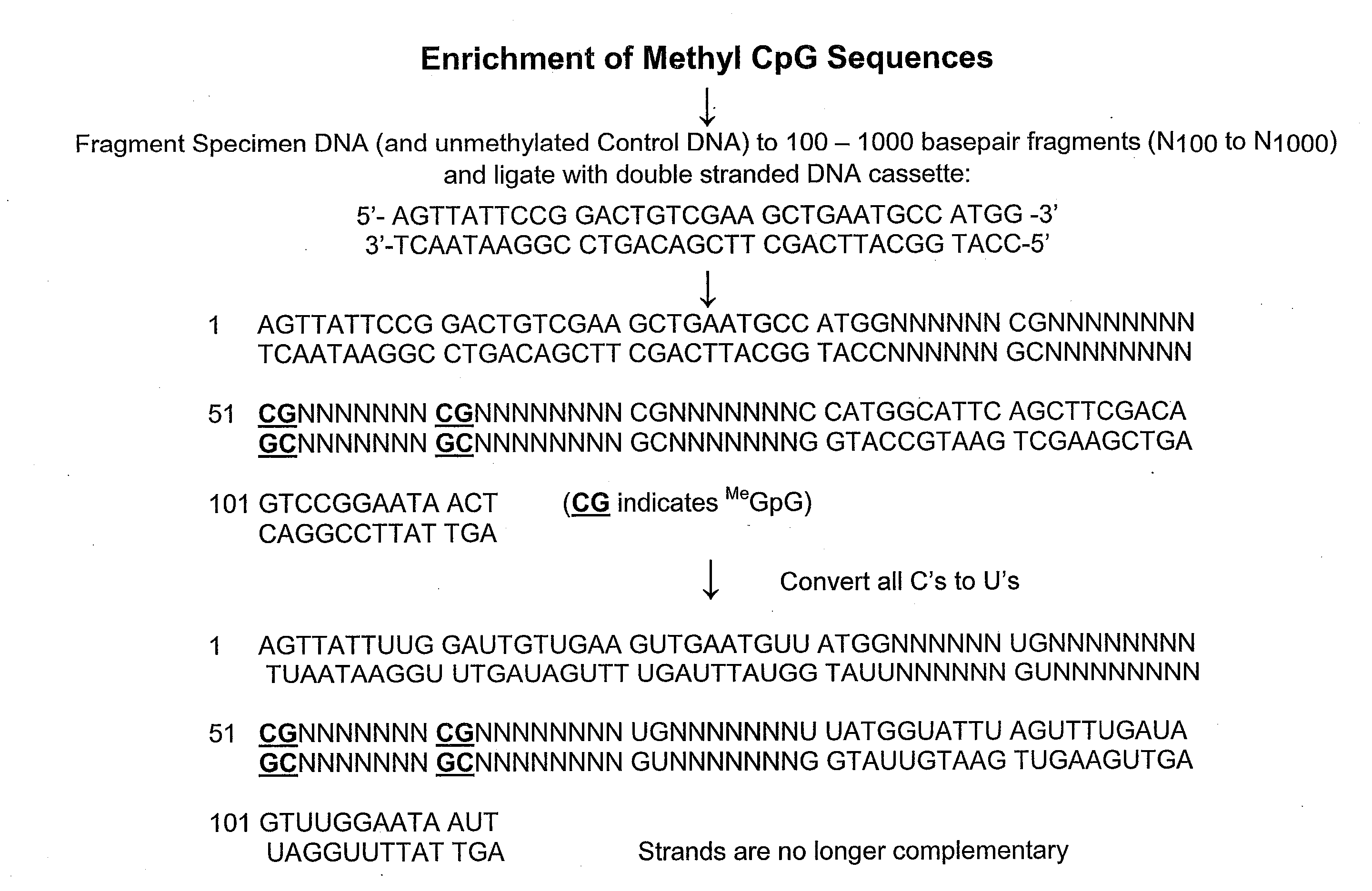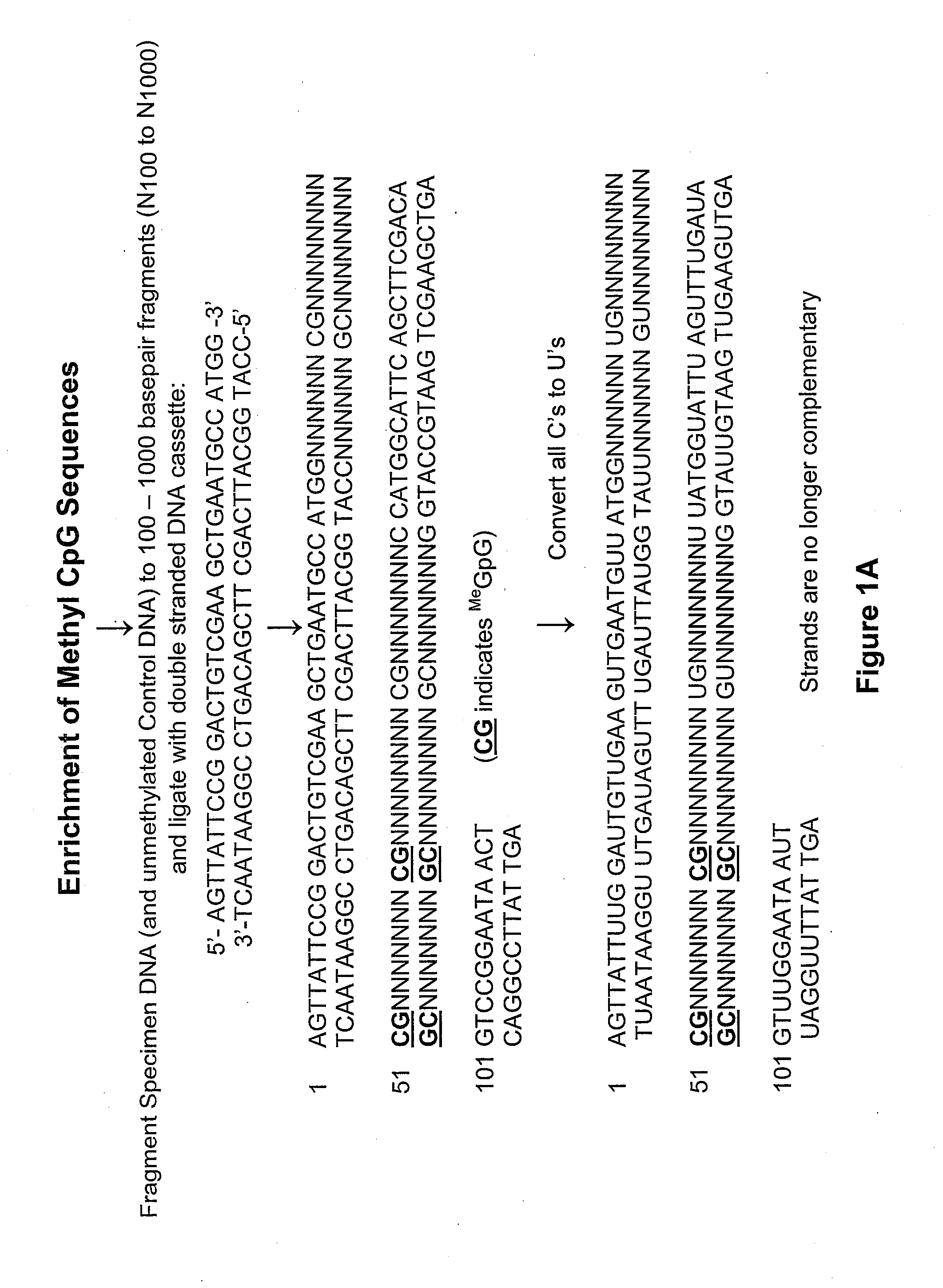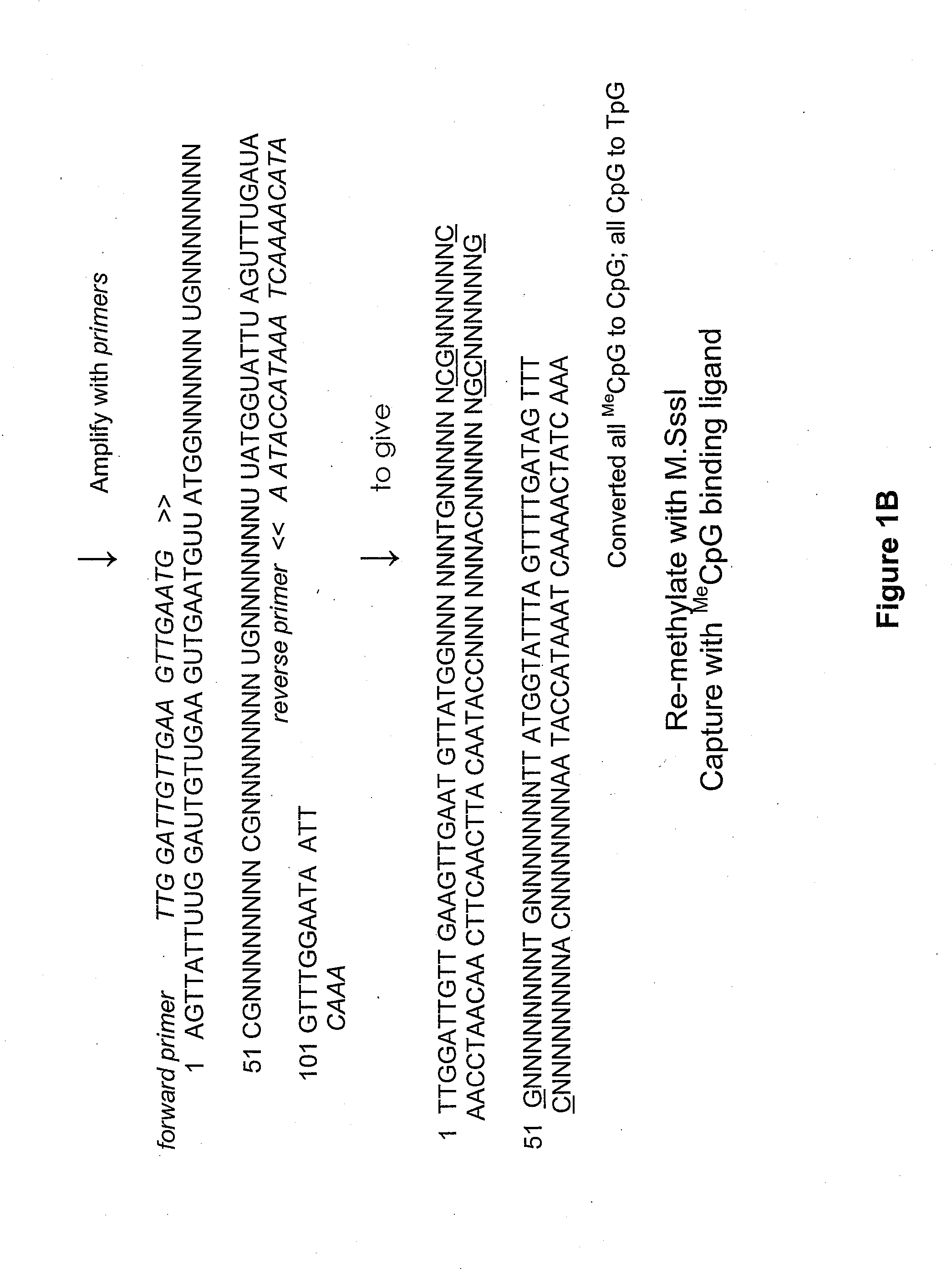Methods for Detection of Methyl-CpG Dinucleotides
- Summary
- Abstract
- Description
- Claims
- Application Information
AI Technical Summary
Benefits of technology
Problems solved by technology
Method used
Image
Examples
example 1
[0062]In experiments to enrich for DNA fragments from a DNA sample containing CGCG and particularly those containing Me-CpG sequences, DNA is isolated from cultured cells, for example normal human bronchial epithelial cells (NHBE) or cancer cell lines such as the lung cancer cell line A549.
[0063]The DNA is isolated by standard means and fragmented using the restriction enzyme MseI, which cleaves at TTAA, leaving TA overhangs. Alternatively the DNA is fragmented using sonication so as to form double stranded fragments of about 500 to 1000 base pairs in length. In the latter case the DNA fragment ends are repaired by standard means to ensure that all double stranded ends are blunt ended. Standard means includes the use of the DNATerminator End Repair Kit produced by Lucigen Corporation (Middleton, Wis.).
[0064]An amplification cassette is then ligated to both ends of the double stranded fragmented DNA. An amplification adapter of the present invention may include the double stranded ca...
example 2
[0072]In bisulfite-treated or other DNA samples in which cytosine residues are converted to uracil while preserving the methyl-cytosine residues, the context of MeCpG in the sequence CMeCpGG can be preserved. The method involves methylating the DNA of the sample with a methyltransferase that specifically methylates the 5′-cytosine residue of CCpGG and CMeCpGG sequences. DNA, isolated from a sample, prior to conversion of cytosine residues to uracil under conditions which preserve methyl-cytosine residues, is treated with MspI methyltransferase under conditions to convert each CCpGG sequence to MeCCpGG and each CMeCpGG sequence to MeCMeCpGG. Standard reaction conditions may be used, such as those recommended by the suppliers such as New England Biolabs (Ipswich, Mass.). After methylation the methylation pattern of the DNA can be analyzed, particularly as it applies to CMeCpGG sequences.
[0073]In preserving the context of MeCpG in CMeCpGG sequences, DNA may be methylated with MspI meth...
example 3
Collection of DNA Containing CMeCpGG Sequences
[0095]At any point in the to preserve the context of CMeCpGG sequences, the isolated recombinant McrA protein (rMcrA) could be used to preferentially select DNA fragments having either CMeCpGG or MeCMeCpGG sequences from DNA fragments lacking such sequences. rMcrA proteins, fully described in the following examples, having affinity tags are particularly, useful for these purposes. The preservation of the context of the CMeCpGG sequences permits the rapid separation of fragments having such sequences from those lacking the tetranucleotide sequence.
PUM
| Property | Measurement | Unit |
|---|---|---|
| Length | aaaaa | aaaaa |
| Size | aaaaa | aaaaa |
| Affinity | aaaaa | aaaaa |
Abstract
Description
Claims
Application Information
 Login to View More
Login to View More - R&D
- Intellectual Property
- Life Sciences
- Materials
- Tech Scout
- Unparalleled Data Quality
- Higher Quality Content
- 60% Fewer Hallucinations
Browse by: Latest US Patents, China's latest patents, Technical Efficacy Thesaurus, Application Domain, Technology Topic, Popular Technical Reports.
© 2025 PatSnap. All rights reserved.Legal|Privacy policy|Modern Slavery Act Transparency Statement|Sitemap|About US| Contact US: help@patsnap.com



